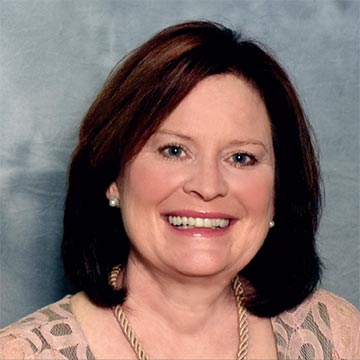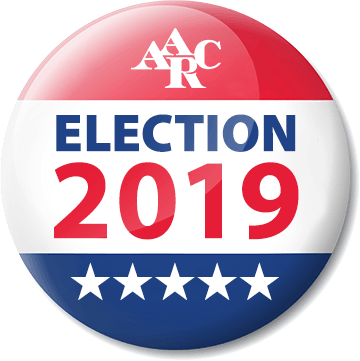Vice President – External
Sheri Tooley, BSRT, RRT, RRT-NPS, AE-C, FAARC
Rochester General Hospital
Supervisor, Respiratory Care Education
Adjunct Faculty, SUNY Upstate Medical University
Member Since: 1982
AARC Activities:
- AARC, Board of Directors, VP External Affairs, 2017-present
- AARC, Board of Directors, Director at Large, 2012-2015
- AARC, Membership Committee, 2012-present
- Board Liaison, Simulation Roundtable, 2014-2015
- Member Virtual Museum Committee, 2013-2014
- Member Management Section, 2004-present
- Member Neonatal/Pediatric Section, 2004-present
- Member Education Section, 2010-present
- Member Diagnostic Section, 2013-2015
- Member Sleep Section, 2002-2013
- Sleep Section Chair, 2009
HOD Activities:
- Secretary, 2010-2011
- New York State Society for Respiratory Care (NYSSRC), Delegate, 2004-2012, 2016
- Co-Chair, AdHoc Committee on Student Engagement, 2008-2009
- Chair, Special Recognition Committee, 2007-2009
- Member Special Recognition Committee, 2005-2006
- Member Orientation Committee, 2009-2011
Affiliate Activities:
- New York State Society for Respiratory Care, State Presidential track, 2000-2006
- NYSSRC, Vice President, 1998-2000
- NYSSRC, Government Affairs Chair, 2006-present
- NYSSRC, PACT Co-Chair, 2006-present
- NYSSRC, Symposium Committee, 2000-present
- NYSSRC, Central Chapter Director, 1986-1994
- NYSSRC, Central Chapter Presidential track, 1992-1998
- NYSSRC, Homecare and Rehab Chair, 2006-2010
- NYSSRC, Public Affairs Committee, 2006-2010
Related Organizations:
- PALS and NRP Instructor
- Advisory Committee RC Chair, Genesee Community College, 2014-present
- Advisory Committee Member RC, Upstate University Medical Center, 2007-present
- Volunteer Chair, CF Foundation of NNY, 1988-2006
Education:
- MSRT, Canisius College, anticipated graduation 8-2018
- BSRT, Upstate Medical University, 2007
- AAS Respiratory Care, Onondaga Community College, Syracuse, NY, 1987
- Certificate Respiratory Care, Onondaga Community College, 1983
- RRT June 1988
- RRT-NPS March 1991, CPFT June 1990, AE-C recertification June 2014
Publications:
- Complex Sleep Disordered Breathing, Author, AARC Times, 2-2010
- Identifying the Patient With Obstructive Sleep Apnea, Author, AARC Times
- Do Unconventional Sleep Therapies Work, Author, AARC Times, 1-2012
- The Correlation Between Pediatric and Sleep Apnea Co-Morbidities, Author, AARC Times, 4-2013
Elections Committee Questions:
What AARC or Chartered Affiliate offices/positions have you held where you feel you made a significant contribution to our profession? What is the contribution and how will you apply it to your new position, if elected?
In my role as VP External Affairs the past 2 years I feel that I have contributed to the profession by taking an active role on the Executive Committee, providing input, and communicating with our members and the Chairs of the Committees that I am tasked with in a meaningful way. Working with them to construct meaningful recommendations and bring back their comments and concerns to the Board.
Another significant contribution has been made as (1) Government Affairs Chair of the NYSSRC which also includes the PACT in my state. I have attended the last 16 Hill Days with the AARC to Lobby for our patients. I attend the NYSSRC State Education Department Meetings as a liaison between the two boards. I successfully guided our State through the sleep regulatory process which ultimately placed sleep medicine in NY under the Respiratory Therapy Board for oversight. I correspond with our lobbyist and the AARC Director of Government Affairs to assure that we are on top of NY legislation in our state. I would say that my work with Student Mentoring has been a significant contribution. I continue this work and 6 years ago developed an essay contest for students enrolled in NYS CoARC approved schools to participate in the PACT meeting and HOD at Congress. If elected, I would continue to work with the President, BOD, and Executive Office to promote the AARC strategic plan/goals.
What experience would you bring to the AARC to accomplish the goals set out by President Walsh?
My longevity with the AARC, being a member since 1982, and actively involved in the Chapter, State and AARC has given me historical perspective. Communication is also a very important aspect of any position. Through my positions as a leader and an educator I have learned the art of active listening and negotiation. I believe that it is important to understand what your members want/need to accomplish any goal.
What ideas do you have to attract non-members to join the AARC?
I believe that in order to attract and keep members an organization needs to continually evaluate what they are doing, what is working, and what is not. Surveys have traditionally not given us the information that we need to increase membership in a powerful way. I believe that more work needs to be done on an individual basis and at a local level. Our membership is aging. We are continually reminded that younger generations have different goals and needs. We need to focus on the schools and the students coming into the profession and get them to maintain their memberships. We need to ask individuals face-to-face what programs or benefits would encourage them to become or stay a member. We need to communicate to them the current membership benefits. Too often we hear that individuals don’t know what the benefits of membership are and too often others want the benefits without the membership. Communication on why not being a member can actually hurt our profession. Numbers talk… right?
Role-Specific Questions:
How would you, as a member of the AARC Executive Committee, work to move the profession forward based on the work done by our current and previous presidents?
I believe that we need to work collaboratively with our CoARC and NBRC partners to develop short- and long-range goals to assure that our curriculum and testing continue to meet and exceed the expectations of our community of stakeholders. Reaching out to the stakeholder for input to break down silos in communication is essential. Open dialogue and frequent communication is the key to our success. Everyone must understand what the obstacles and barriers are and then work together to overcome them. In my own state, I have worked with our Lobbyist and we have recently gotten a bill sponsored and introduced in the Legislature for a minimum of a bachelor’s degree for licensure. While we know this won’t happen quickly it has opened the door for communication and brings respiratory therapy to the forefront in state government.







